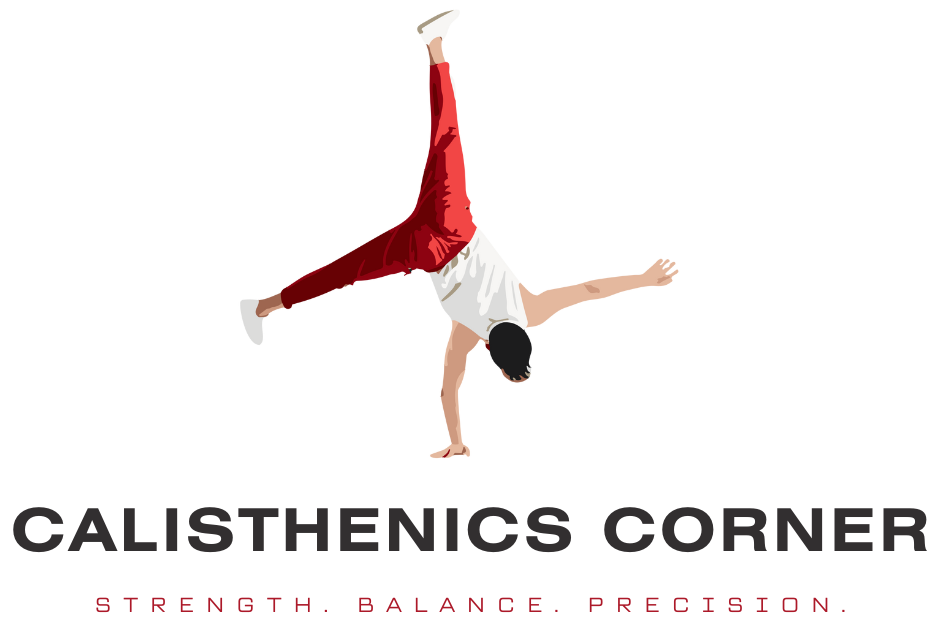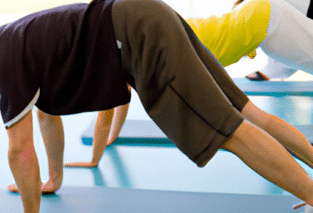If you’re a soccer player looking to enhance your performance on the field, you may be wondering if calisthenics is the way to go. Calisthenics, a form of exercise that uses body weight to build strength and improve flexibility, has gained popularity in recent years. But is it really beneficial for soccer players? In this article, we will explore the potential benefits of calisthenics for soccer players and discuss why incorporating this type of exercise into your training regimen could be a game-changer.
Increase Strength and Power
Building Muscle Mass
Calisthenics can be an excellent tool for soccer players looking to increase their strength and power. By focusing on bodyweight exercises such as push-ups, pull-ups, and squats, you can effectively target major muscle groups and promote muscle hypertrophy. This increase in muscle mass allows you to generate more power during explosive movements on the field, such as sprinting, jumping, and tackling.
Improving Explosive Power
In addition to building muscle mass, calisthenics can also help improve explosive power. Plyometric exercises like box jumps, burpees, and clapping push-ups can enhance your ability to produce quick and forceful movements. This translates to more explosive sprinting and jumping abilities, crucial skills for soccer players.
Enhance Flexibility and Mobility
Increasing Range of Motion
Flexibility plays a vital role in soccer performance as it allows you to perform dynamic and fluid movements on the field. Calisthenics exercises like lunges, yoga-inspired flows, and dynamic stretches can help increase your range of motion and enhance your overall flexibility. This increased flexibility can lead to improved agility, quicker changes in direction, and better control of your body during complex movements.
Reducing the Risk of Injury
Improving flexibility through calisthenics can also help reduce the risk of injuries. By increasing your range of motion and flexibility, you are less likely to strain or tear muscles during strenuous activities. This is especially important for soccer players who constantly engage in rapid changes of direction, quick accelerations, and sudden stops, which can put strain on the muscles and joints.
Improve Balance and Coordination
Building Core Stability
Calisthenics exercises put a significant emphasis on building core stability, which is essential for maintaining balance and coordination on the soccer field. Movements like planks, hollow holds, and V-sits engage the deep core muscles, enabling you to maintain proper body alignment and stability when performing various soccer-specific skills, such as dribbling, shooting, and tackling.
Developing Proprioception
Calisthenics can also enhance your proprioception, which refers to your ability to sense the position and movement of your body in space. Through exercises like single-leg squats, balance drills, and handstands, you challenge your body to maintain stability and control, thus improving your proprioceptive awareness. This heightened body awareness allows you to respond quickly and efficiently to changes in your environment during a soccer match, aiding in balance and coordination.
Enhance Endurance and Stamina
Improving Cardiovascular Fitness
Calisthenics workouts can significantly improve your cardiovascular fitness, which is crucial for soccer players who need to maintain a high level of intensity throughout a match. The continuous flow of movements in calisthenics workouts, such as jumping jacks, mountain climbers, and high knees, elevate your heart rate and challenge your cardiovascular system. Regular calisthenics training can lead to increased endurance, enabling you to sustain your performance for longer periods on the field.
Building Muscular Endurance
In addition to cardiovascular fitness, calisthenics can also help build muscular endurance. Exercises like push-ups, squats, and lunges require multiple muscle groups to work together over an extended period, training your muscles to withstand fatigue. With improved muscular endurance, you can maintain your performance level even as your muscles fatigue during the course of a soccer match.
Promote Body Awareness and Control
Improving Body Awareness
Calisthenics exercises require a high level of body awareness, as you have to rely on your own bodyweight for resistance and stability. Movements like handstands, L-sits, and planches challenge your body to maintain control and awareness of your position and alignment. This increased body awareness transfers to the soccer field, where you need to be fully aware of your body in relation to the ball, your opponents, and your teammates.
Enhancing Movement Control
Calisthenics also enhances your movement control, which is crucial for executing precise and efficient movements during a soccer match. Exercises that focus on controlled movements, such as slow and controlled push-ups, pistol squats, and controlled descents, train your muscles to move with precision and control. Improved movement control translates to better coordination and execution of soccer-specific skills, such as passing, shooting, and dribbling.
Address Muscle Imbalances
Correcting Strength Disparities
Calisthenics can be an effective tool for addressing muscle imbalances that may arise due to the repetitive nature of soccer movements. By performing unilateral exercises like single-leg squats, pistol squats, and single-arm push-ups, you can identify and correct any strength disparities between your left and right sides. This helps prevent injuries and ensures that both sides of your body have equal strength and power.
Balancing Overused and Underused Muscles
Soccer players often have overused muscles, such as the quadriceps and hip flexors, and underused muscles like the glutes and hamstrings. Calisthenics exercises like glute bridges, bodyweight deadlifts, and Bulgarian split squats can help correct these muscle imbalances, strengthening the underused muscles and providing better overall muscle balance. This balanced muscle development enhances your performance and reduces the risk of injuries caused by muscle imbalances.
Facilitate Injury Rehabilitation
Rebuilding Strength
Calisthenics can be a valuable tool in the rehabilitation process after an injury. By utilizing exercises like bodyweight squats, push-ups, and step-ups, you can gradually rebuild strength in injured muscles and joints. The controlled nature of calisthenics exercises allows you to progress at your own pace and target specific areas for rehabilitation, facilitating a safe and effective recovery process.
Restoring Movement Patterns
In addition to rebuilding strength, calisthenics can aid in restoring proper movement patterns after an injury. Functional movements like lunges, squats, and balance exercises help retrain your body to move correctly and efficiently, ensuring that you can resume normal soccer activities without compensatory movements that may lead to further injuries. Calisthenics can assist in regaining confidence in your body’s ability to move and perform safely and effectively.
Support Overall Athletic Performance
Enhancing Speed and Agility
Calisthenics can have significant benefits for improving speed and agility, both vital aspects of soccer performance. Explosive movements like burpees, sprint intervals, and tuck jumps increase your overall power output, enabling you to sprint faster and change direction more quickly. By incorporating these exercises into your training routine, you can enhance your speed and agility on the soccer field.
Improving Power-to-Weight Ratio
Calisthenics exercises can be particularly effective in improving your power-to-weight ratio, which refers to the amount of power you can generate relative to your body weight. By performing bodyweight exercises like push-ups, pull-ups, and dips, you can build strength without adding excessive body weight, resulting in a higher power output per unit of body weight. This increased power-to-weight ratio can give you a competitive edge on the soccer field.

Adaptability and Convenience
Minimal Equipment Requirement
One of the main advantages of calisthenics is its minimal equipment requirement. Many calisthenics exercises can be performed using just your bodyweight, eliminating the need for expensive gym memberships or bulky equipment. This makes calisthenics a convenient option for soccer players who may not have access to a fully equipped gym but still want to improve their strength, power, and overall fitness.
Versatility in Different Environments
Calisthenics workouts can be performed in a variety of environments, making them adaptable to different training settings. Whether you prefer to train at home, in a local park, or even on the soccer field itself, you can easily incorporate calisthenics exercises into your routine. The versatility of calisthenics allows you to maintain consistent training regardless of your location, ensuring that you can continue to improve your athletic performance wherever you are.
Potential Drawbacks
Lack of Specificity
While calisthenics can provide numerous benefits to soccer players, it is essential to note that it may lack specificity to certain soccer-specific movements. Soccer involves a wide range of skills, including kicking, dribbling, and positional play, which may not be directly trained through traditional calisthenics exercises. While calisthenics can enhance overall athleticism, soccer players should also include specific soccer drills and skill-based training to fully optimize their performance on the field.
Limited Load Progression
Another potential drawback of calisthenics is the limited load progression compared to weighted exercises. While calisthenics can build strength and power, the bodyweight resistance may eventually become insufficient for optimal performance gains. Incorporating external weights or resistance bands can help counter this limitation and continue to challenge your muscles, allowing for continued progress in strength and power development.
In conclusion, calisthenics can be a valuable training method for soccer players, offering a wide range of benefits that can enhance strength, power, flexibility, balance, endurance, body awareness, and overall athletic performance. By incorporating calisthenics exercises into your training routine, you can improve your on-field performance and reduce the risk of injuries. While calisthenics may have some limitations, it remains a versatile and convenient option for soccer players aiming to elevate their game.








